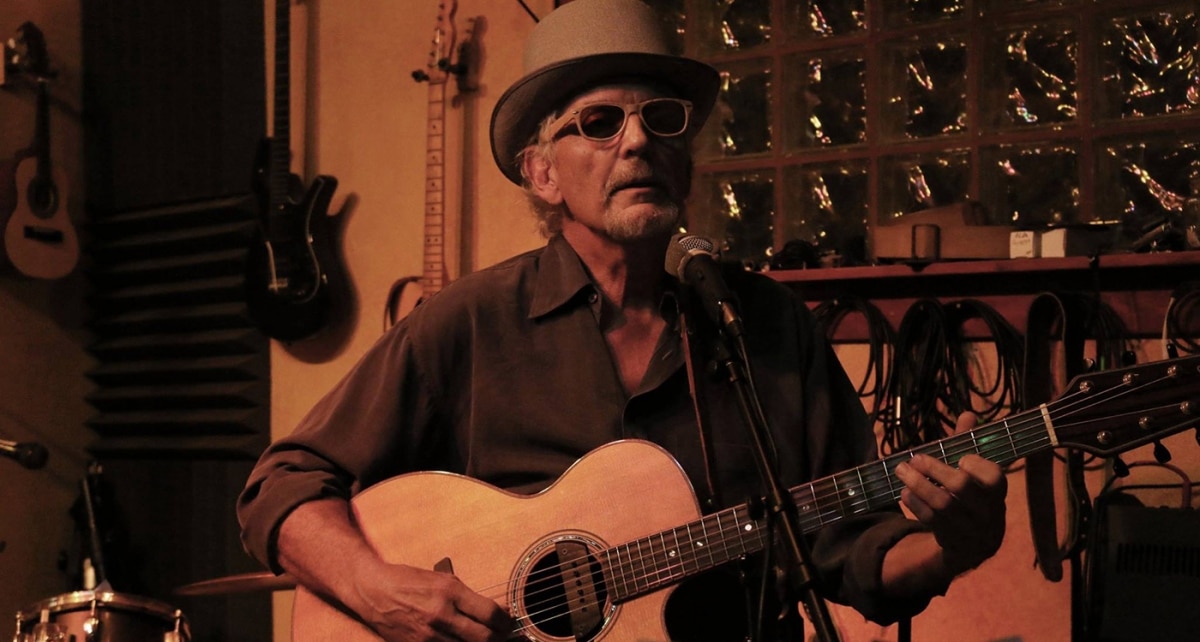A Conversation With Hawaii-Based Builder Steve Grimes
From the Northwest to the extreme Southwest – Maui-based builder, Steve Grimes is celebrating his 50th year in luthiery. He shares with us his thoughts on the industry at large, the upcoming Rocky Mountain Archtop Festival, and some new innovations in his own designs.
 Where did you begin your building career?
Where did you begin your building career?
I started in Seattle, in 1972, moving out to Port Townsend, WA in ‘74. I lived and built there for 8 years, and then moved out to Maui in 1982. Every year I’d try to get out of the Seattle rain and go to Maui for 3 months or so, and play hotel gigs with a group of musicians I’d known and played with for a while. I could stay with them and make good money while I was there, also doing repair work for the local music stores during my stays. Then I’d come back home and build.
What are some of the differences in building in the Seattle and Maui climates?
The climate is actually better here for building; in Seattle, it was high humidity with low temperatures, which makes for slow drying time for glues, finishes, things like that. At my elevation here, close to 4,000 ft, the average temperature is about 70 – instead of 45 during the winter in Seattle! And the humidity is less than it was there, as well. The high humidity stereotype of all parts of Hawaii isn’t really accurate, and especially not where I’m located. I build in a climate controlled shop, kept to 45% humidity, 24 hours a day. That way the instrument has the best chance of survival if it goes to an area with extreme humidity levels.
You’ve been building a lot of asymmetrical guitar body designs, tell us about that.
Yes, I started building them maybe 10 years ago, after building more typical ‘figure 8’ style bodies for the majority of my career. But in the last 5 years or so especially, I find my orders for asymmetrical bodied guitars and ukuleles are about 50/50 with traditional designs. They’re very popular now. My 50th anniversary guitar that I’m bringing to the Rocky Mountain Archtop Festival has an asymmetrical body!
How has the industry changed during the time you’ve been building?
Just in terms of styles of guitars – mostly we’re talking about archtop guitars – I rode that wave of archtops that, I think, was cresting in the ‘90s and inspired by luthiers like D’Aquisto and Benedetto, who got into the business a little before me. Through the 90s, my shop was probably 90% archtop guitars. Now, it’s probably 20%. The majority are flattops. And I started making ukuleles in the ‘70s, but they really kicked in big time in the late 90s, and by 2002 roughly a third of my orders were for ukes – and that wave is still cresting. Ukuleles have really gone through the roof in the industry.
Tell us about your involvement with the Rocky Mountain Archtop Festival and what you’re looking forward to
Well, I’ve never done it before, but I’d heard about it for a few years before signing on. A lot of luthiers go to shows to generate orders; I’ve got a lot of orders, so that’s an aspect for me but not necessarily the primary one. I like to go to the shows to see my friends; it’s kind of a social gathering for me. The NAMM show was that way for me as well. I’ll be exhibiting at the show, but I think aside from that it’ll be a lot of catching up with peers and friends in the industry. I’m sure we’ll have some jams in the evenings at the show!
Are there other luthiers you’re excited to check out?
Well there are a lot of luthiers I’m not familiar with and I’m always eager to see who’s coming and what they’re doing. And like I was saying, there are also a lot of luthiers that are friends that I like to see, and see what they’re up to.
What else would you like people to know about you and your guitars?
I mainly make an acoustic archtop guitar; that’s the difficult part. Putting a pickup on a guitar and attaching it to an amplifier is something I would say 50% of players want to do, so I would say about half of the archtops I make are intended to have pickups. But the other half is just looking for something that has that acoustic projection. Yes, I can make a guitar that functions very well with a pickup on it, and you can sit in front of an amplifier and play with a lower chance of feedback than other archtops.
In fact, I just developed a feedback-canceling bridge this year that has two little thumbwheels on the outside wings of the bridge that you can screw down to make contact with a graphite dowel that comes up from the back, mechanically connecting the top and back, which kills quite a bit of the acoustic tone and nature of the instrument, which causes the feedback. So with this adjustment you can make in literally 5 seconds on stage, it kills that feedback if you want to turn up. It allows the guitar to function both as an acoustic, primarily, but also an electric. I’d say it reduces feedback by 30%, which is usually enough to avoid hitting the volume threshold that feedback might occur at.
To learn more about Grimes and Guitars and Steve’s music, visit him at https://grimesguitars.com
